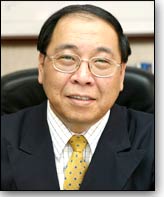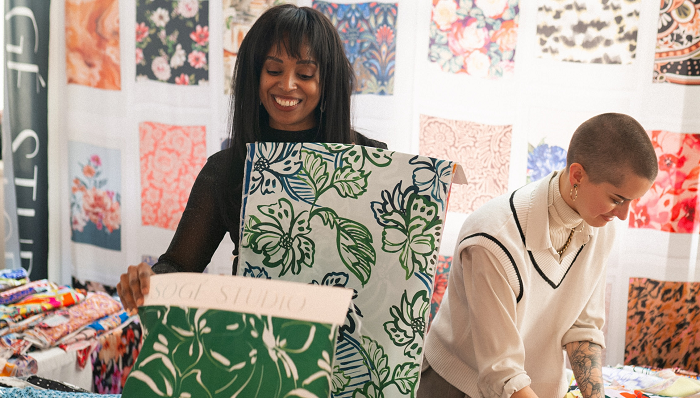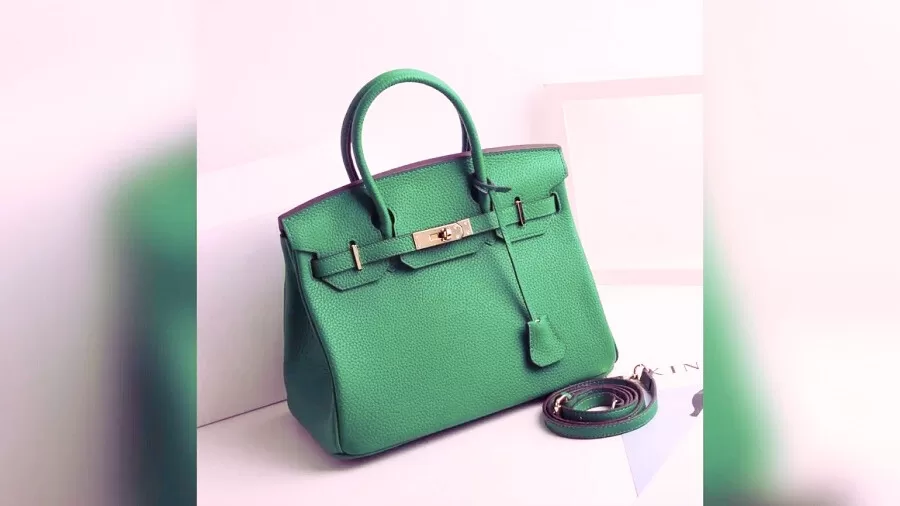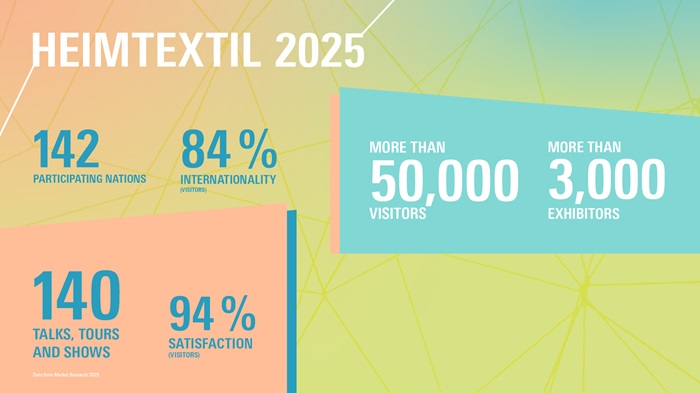FW
Up to November 29, 2013 two expert committees at ECHA, the European Chemicals Agency are accepting stakeholder comments on a restrictions proposal submitted by Sweden on REACH. Sweden’s proposal includes restriction in the use of nonylphenols (NPs) and nonylphenol ethoxylates (NPEs) in textile articles such as clothing, fabrics, accessories and interior textiles (including their prints).
The use of NPs and NPEs in concentrations of 0.1 per cent or more is already restricted since 2005 within the EU in the manufacturing of textiles. On the other hand, a majority of textiles purchased within the EU are imported from manufacturers and suppliers outside of the EU, including from Asian countries Hong Kong and mainland China. Sweden now claims that these suppliers still use MNPs and NPEs as a detergent or emulsifying agent in the manufacture of their textiles.
After being imported into the EU, such articles will be washed and residues of NPs and NPEs will be released into waste water. Eventually, these toxic substances will end up in the aquatic environment. NPs enter aquatic life directly as NPs or as breakdown products from NPEs. Sweden’s major concern is the prevention of the environment from these toxic substances. NPs are toxic and hormone disrupting substances that may cause long term adverse effects to the aquatic environment.
Echa.europa.eu
The second Euratex Convention, the European exchange and meeting platform for the textile industry saw 130 participants from 16 countries attend 18 lectures that discussed ideas and visions for the future of the textile and clothing Industry. The event, based around a future-oriented subject ‘European Textiles & Fashion 2025 - A new industry paradigm driven by innovation’, took place on November 4 and 5 at Deutsche Bank in Berlin.
Presentations from representatives from China and the US showed the expectations from the US in incoming free trade area negotiations and unveiled the future prospect of China textile and nonwoven industries. They also highlighted the opportunities and challenges China will face by 2025 that would impact the textile and clothing world.
The audience also had the opportunity to attend a presentation on how future multichannel commerce will impact and revolutionise the globalised textile and clothing industry. The sessions provided impetus to the idea that transferring today’s megatrends into action plans for individual company and strategies is of increasing importance in this globalised and highly competitive environment.
www.euratex.eu
Despite the once rich textile industry of Spartanburg County suffering today, a company called Green Textile Associates, run by a family for four generations, has continuously shown signs of growth. The company is all set to celebrate its 76th anniversary this year at its corporate headquarters at 190 Bellew Carver Road near the west side.
Founded in October 1938 by Sydney R Green in Boston, in November 1938, Green Textile got an approval to do business in South Carolina. Green, who had five daughters, passed the executive leadership duties on to his son-in-law, Maurice J. Simon in 1952. His son John S Simon, who is now 75, served as President of the company from 1984 to 2001 and then his son Simon became President in 2001.
Green Textile originally processed spinning mill waste for manufacturers, including Spartan Mills, Mayfair Mills and various other companies. However, its operations continued to expand through the 1950s, 1960s and early 1970s, as the company began moving into the double-knit polyester and finishing business.
The company has since evolved, developing the capability to produce its own fabrics.
Now it manufactures materials including apparel, home textile, industrial and medical industries. Green Textile also produces organic cotton and fabrics made from other eco-friendly materials, including recycled polyester, PLA, bamboo, hemp, Modal and Tencel. The company witnessed growth of 21 per cent, compared to 2012.
Recently, it tied up with footwear giant New Balance, to close a loophole in the Berry Amendment that would specify the US government must provide American-made athletic shoes to new service members. Green Textile produces fabric for the tongue, eye row and linings for a version of New Balance's 950, a Berry Amendment-compliant sneaker made entirely from products made in the US.
www.greentextile.com
 Taiwan best known for its functional textiles for fashionable use is planning to keep its focus on R&D and eco friendly textiles in the future. This was reiterated by Justin Huang, Secretary General of TTF. Emphasizing on the development of the textile industry, Justin Huang, Secretary General, TTF says, “Our future development is in two directions. Firstly, to continue our R&D in functional and eco friendly textiles and get accreditation, which will help companies working in this space to become more competitive globally. Secondly, considering the market response, we could target the likes of Walmart, M&S, GAP etc, as they are planning to source functional textiles for fashion use. This is a wonderful idea. If their fashionable items have functionality value, we can help their products and the consumer can enjoy better technically better products.”
Taiwan best known for its functional textiles for fashionable use is planning to keep its focus on R&D and eco friendly textiles in the future. This was reiterated by Justin Huang, Secretary General of TTF. Emphasizing on the development of the textile industry, Justin Huang, Secretary General, TTF says, “Our future development is in two directions. Firstly, to continue our R&D in functional and eco friendly textiles and get accreditation, which will help companies working in this space to become more competitive globally. Secondly, considering the market response, we could target the likes of Walmart, M&S, GAP etc, as they are planning to source functional textiles for fashion use. This is a wonderful idea. If their fashionable items have functionality value, we can help their products and the consumer can enjoy better technically better products.”
Huang further says functional textiles can be adapted for regular wear as well. “We can do this in a very short time. We can differentiate strategy from Korean competition or Chinese competition. Next year we hope new fashionable retailers to come to Taiwan to explore suppliers.”
He feels China too can enter functional textiles space but Taiwan can stay ahead by innovating. “Our strongest product portfolio is professional sports use such as FIFA, NBA etc, they source the fabrics from here for uniforms. NBA and American Football sources fabrics from Taiwan and overseas apparel manufacturers do the sewing, cutting services. All big brands source from Taiwan.”
He feels, consumers see functional textiles as new trend. Rise in standard of living and the trend of leisure has left consumers asking for more and functional textiles add that extra quotient to one’s wardrobe style. The Taiwan textile industry also adds eco-friendly element to the primitive functional textiles. The Bureau of Foreign Trade (BOFT) aims to turn Taiwan into a textile hub in the Asia-Pacific region by applying the same integration model it used to propel Taiwan's auto parts industry globaly. It is planning to nurture professional textile trading companies, which are capable of integrating designers, product developers, manufacturers and marketers to churn out first-class products and sell them to global markets.
UK’s Leicestershire is all set to become a major textile manufacturing centre all over again. A recent estimate reveals the county still accounts for about a fifth of all clothing made in the UK and three-quarters of UK business leaders associate the trade with the area. Leicestershire’s textile sector was decimated during the 1990s as major retailers, such as Marks & Spencer, moved production to India, North Africa, China and other Far Eastern countries to cut costs. Another report by market researchers tasked with assessing the vibrancy of the UK textile industry says Leicestershire is in a prime position to meet the expected rise in demand.
The report, by Cast Intelligence, of Nottingham, says the county still has more than 800 textile firms who produce £500 million worth of goods each year. The report concludes, “This data suggests that the knitwear industry in Leicestershire is still vibrant.” However, in order to fully take advantage, firms are having to invest in new machinery and new staff.
Mandip Rai, Head of Leicester and Leicestershire Enterprise Partnership (LLEP), which is overseeing the allocation of cash from the Government’s Regional Growth Fund for growing businesses, points out that 30, or about a third, of the applicants were from the textile sector. He said a lot of these companies were now being run by well-qualified executives, usually the second and third generation of Asian family owners.
Exports of garments and textiles from Vietnam have increased by 18.7 per cent year-on-year during the first 10 months of the current year. From January to October 2013, Vietnam’s apparel and textile exports to South Korea, Japan and the US recorded a strong growth. Canada, Brazil and Mexico were also among the countries that imported more clothing and textiles from Vietnam during this period.
China is the largest supplier of raw materials to Vietnam. In October 2013, Vietnam’s clothing and textiles exports grew by 30 per cent year-on-year.
Vietnamese garment businesses depend heavily on import of raw materials, as domestic cotton meets only 1 to 2 per cent of demand. Similarly, local fabric production is able to meet only about 12 to 13 per cent of the garment sector’s demand.
Vietnamese garment companies are anticipating a boost in their exports, especially to the US, once the Trans-Pacific Partnership (TPP) is successfully negotiated and implemented. The 12 countries negotiating the TPP are: Australia, Brunei Darussalam, Canada, Chile, Japan, Malaysia, Mexico, New Zealand, Peru, Singapore, United States, and Vietnam.
BGCCI and German development cooperation agency GIZ have signed a MoU to offer skills training to mid-level managers of the ready-made garment sector in Dhaka. The MoU was signed under the Promotion of Social and Environmental Standards (PSES) programme. PSES is a joint project of the governments of Bangladesh and Germany, implemented by German development cooperation agency GIZ.
High officials of Bangladesh German Chamber of Commerce and Industry (BGCCI) and German development cooperation agency GIZ inked the deal on behalf of their respective sides. The agreement is to start providing technical, vocational and educational trainings (TVET) to RMG factories through a pilot school by Bangladesh Institute of Management (BIM).
As a part of the pilot project, around 300 mid-level workers from more than a hundred factories are set to attend the programme. BGCCI executive director Daniel Seidl said, “Ready-made garment sector is lacking the skill required to make better quality clothes that give higher revenue and it is high time we address the shortage of skilled workers and mid-level managers in the industry.” GIZ Country Director Olaf Handloegten adds, “The lack of qualified workers and mid-level managers is a key constraint to the growth and diversification of Bangladesh’s export oriented RMG and textile sector.”
According to Walmart, about 10 of more than six dozen Bangladesh garment factories failed their safety checks in audits it commissioned. The retailer hired Bureau Veritas to check some 200 factories it uses in Bangladesh after the April collapse of Rana Plaza building which killed more than 1,100 people and highlighted often grim conditions in the country's garment industry.
About 75 factories have been audited so far and Walmart said it will release the results for other factories as the inspections are completed. It said factories that failed audits have since made improvements.
Bangladeshi garment makers employ millions of people, mostly women, but safety has been an afterthought amid pressure to fill orders, while enforcement of labour rights and building safety codes is compromised by corruption and thin government resources.
In the aftermath of the Rana Plaza disaster, major European clothing retailers signed up to a system of factory inspections in conjunction with labour and activist groups. Recently garment factory owners agreed to a 77 per cent increase in the minimum wage for new unskilled garment workers to Taka 5,300 ($66) a month after Bangladesh's prime minister stepped in to resolve four days of violent clashes over wages.
Bangladesh’s ready-made garment makers are planning to start negotiations with international buyers on enhancement of prices of apparel products. They feel the rise will help the industry implement the proposed new wage structure for workers at factories. Buyers have apparently expressed their willingness to raise apparel product prices by 5 per cent from the existing level, following a 77 per cent pay hike proposed by the wage board.
Buyers’ representatives will be invited to Dhaka this month to discuss ongoing issues. Big factories are able to ensure the enhanced wages, but it will be difficult for small and medium-category units, which mainly depend on buying houses or sub-contracts. Unless buyers or retailers increase the prices of apparel products in line with the wage hike, it would be difficult for many garment factories to properly implement the enhanced wages.
The problem is buyers are very eager about safety measures, including those involving fire and building structures, and also on increasing wages, but their response with regard to raising apparel products’ prices is very slow.
Despite political turmoil, industrial accidents, buyers are placing orders in Bangladesh only because of the competitive rate and quality products. But they have options other than Bangladesh like India, Cambodia, Vietnam and Indonesia.
Mayer has launched HPI (High Productive Interlock) version of its D4-2.2 II machine. The machine is reported to be selling well in India and Turkey, with one buyer in India recently ordering 12 machines. Mayer is a leading circular knitting machine maker from Germany.
The D4-2.2 II produces around 330 kg per day at a 135 gsm fabric weight. It has everything it takes for optimum knitting quality. The D4-2.2 II is basically a 2.2 feeder per inch machine which is suitable for producing high quality rib, interlock and other structures with up to 4 needle tracks in the cylinder and two in the dial. With a conversion kit it is possible to convert the machine into a 4.4 feeder interlock machine. Scope for extension to up to 4 needle tracks lends it an outstanding degree of flexibility.
With all the possibilities opened up by 4 needle tracks, the D4-2.2 II is capable of knitting the whole range of popular double jersey interlock and rib structures. The cylinder and dial can be quickly and reliably removed and exchanged with the company’s Quick Change system.
The machine is equipped with full ceramic yarn carriers and the same needles as Mayer’s OV 3.2 QC, a leading 8-lock machine. Application areas for the D4-2.2 II include outerwear, sport and leisure, technical textiles, underwear and nightwear. Knittable structures include interloop, interlook structure, rib structure and spacer.
www.mayerandcie.com/de/











